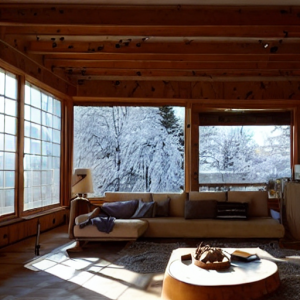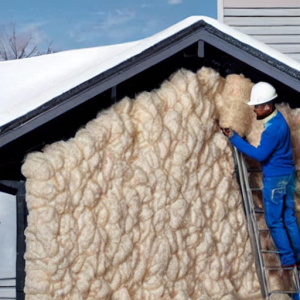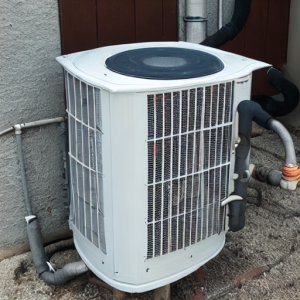Create a Cozy Winter Sanctuary While Reducing Your Energy Expenses
As winter approaches and the landscape transforms under a blanket of frost, the desire for a warm, inviting home becomes paramount. However, the escalating costs associated with heating can create financial strain for many households. Fortunately, you can adopt a variety of effective energy-saving strategies that will enable you to transform your living space into a cozy retreat without breaking the bank. In this article, you will discover actionable, practical advice and proven techniques designed to keep your home warm and inviting, all while ensuring that your energy bills remain under control throughout the winter season.

Boost Your Home’s Energy Efficiency by Identifying and Sealing Air Leaks
A substantial amount of heat loss in residences occurs through unnoticed air leaks. By effectively identifying and sealing these gaps, you can significantly enhance your home’s energy efficiency while simultaneously lowering your heating costs. This detailed guide will equip you with practical strategies for locating and addressing air leaks around vents, windows, and doors:
- Windows:
- Inspect for Drafts: On windy days, take the opportunity to thoroughly check the edges of your windows for any noticeable drafts. Using a candle or incense stick can help you detect even the slightest air movements that indicate leaks, allowing you to identify specific areas that require attention.
- Apply Weatherstripping: Utilize weatherstripping materials—such as adhesive-backed foam or V-strip—to create a tight seal around your window frames. Selecting the appropriate type based on your window design is essential for effective insulation and maximizing energy savings.
- Doors:
- Check for Gaps: Closely inspect the edges of your doors for any visible gaps that may permit cold air to infiltrate. A well-lit room at night can illuminate any leaks through these openings, making them easier to address.
- Install Door Sweeps and Weatherstripping: Attach door sweeps at the bottom of doors to block drafts and apply self-adhesive weatherstrips along the sides to effectively seal any gaps that may compromise your home’s energy efficiency.
- Vents and Ducts:
- Seal Ductwork: Ensure that your ductwork is sealed properly to prevent warm air from escaping into unconditioned spaces. Employing a mastic sealer or foil tape can help secure any loose connections, thereby enhancing your heating system’s overall performance.
- Install Vent Covers: Magnetic or adhesive vent covers can effectively control airflow, minimizing drafts in less frequently used rooms while maintaining comfort in the main living areas of your home.
- Caulking and Sealant:
- Inspect Exterior Walls: Carefully examine the outer walls of your home for any cracks or holes. Applying caulk or sealant to fill these gaps will prevent air and moisture from intruding, contributing significantly to better energy efficiency.
- Select the Right Sealant: Choosing the appropriate sealant based on the location and materials of your walls is crucial. Silicone is ideal for flexible joints, while acrylic caulk works best for indoor applications.
- Utilize Draft Stoppers:
- Place Along Door Bottoms: Employ draft stoppers, also referred to as door snakes, to block cold air from entering through the bottom of doors. These fabric tubes can be easily adjusted or removed as needed, providing a quick and effective solution to chilly drafts.
- Seek Professional Assistance:
- Consider Energy Audits: Hiring a professional for an energy audit can yield significant benefits. Experts utilize advanced tools, such as thermal imaging cameras, to identify hidden leaks and offer tailored solutions for your home.
Regular inspections and prompt repairs of discovered air leaks not only enhance your home’s overall comfort but also drastically improve energy efficiency. By proactively sealing these gaps, you can substantially lower your energy bills while creating a more welcoming living environment that you can enjoy throughout the winter months.
Maximize Natural Sunlight to Boost Warmth and Ambiance in Your Home
 Leveraging natural sunlight during the winter can significantly enhance both the warmth and ambiance of your living space. Here’s a comprehensive exploration of effective strategies to utilize daylight to your advantage:
Leveraging natural sunlight during the winter can significantly enhance both the warmth and ambiance of your living space. Here’s a comprehensive exploration of effective strategies to utilize daylight to your advantage:
- Daylight Utilization Strategies:
- Strategic Curtain Management: Keep curtains and blinds open during daylight hours to allow natural sunlight to flood your living areas. Position them to fully expose windows and let sunshine penetrate deeper into your rooms, maximizing warmth and brightness.
- Choose Sheer Fabrics: If privacy is a concern, consider using sheer curtains that allow sunlight to filter in while still maintaining some level of seclusion. The diffusion of light through sheer materials creates a warm and inviting atmosphere in your home.
- Solar Heat Gain:
- Understanding Solar Heat: Sunlight entering your home can contribute to solar heat gain, especially through south-facing windows that receive more sunlight in winter. This natural warmth can be advantageous for warming your space without incurring additional heating costs.
- Utilize South-Facing Windows: Prioritize opening curtains and blinds on south-facing windows to maximize sunlight exposure, which is especially beneficial in colder climates where every ray counts.
- Nighttime Heat Retention:
- Close Curtains at Night: As temperatures drop in the evening, drawing your drapes and blinds helps insulate your home, preserving the warmth collected throughout the day. Opt for heavier drapes or those with thermal lining for enhanced insulation.
- Invest in Insulated Window Treatments: Consider adding insulated drapes or shades to further reduce heat loss, effectively creating an additional barrier against cold air infiltrating your living space.
- Ambiance and Well-Being:
- Enhance Indoor Lighting: Natural sunlight not only warms your home but also improves indoor lighting quality, reducing reliance on artificial lighting during the day. This adjustment can lead to lower energy consumption and positively impact your electricity bills.
- Incorporate Biophilic Design: Exposure to natural light has been linked to improved well-being. Allowing sunlight into your living areas can positively influence your mood and productivity levels, creating a more enjoyable home environment.
- Window Maintenance:
- Clean Windows Regularly: Ensure that your windows are cleaned frequently to maximize sunlight entry. Regularly removing dust and debris from both the interior and exterior will prevent obstructions that can limit natural light and warmth.
- Smart Home Technology:
- Consider Automated Window Treatments: Think about installing smart window treatments that can automatically open and close based on predetermined schedules, optimizing sunlight exposure and heat retention without the need for manual adjustments.
Incorporating these tactics into your winter routine will enable you to fully harness the benefits of natural sunlight, crafting a warm and inviting atmosphere in your home while also enhancing energy efficiency. By optimizing window treatments and understanding the principles of solar heat gain, you can significantly elevate comfort levels and ambiance during the colder months.
Enhance Energy Efficiency Using Proper Insulation Techniques
 Effective insulation is essential for minimizing heat loss and improving the overall energy efficiency of your home. Crafting a comprehensive insulation strategy focused on key areas, such as the attic, walls, and basement, will create a warmer and more cost-effective living environment throughout the cold winter months.
Effective insulation is essential for minimizing heat loss and improving the overall energy efficiency of your home. Crafting a comprehensive insulation strategy focused on key areas, such as the attic, walls, and basement, will create a warmer and more cost-effective living environment throughout the cold winter months.
Start your journey toward energy efficiency by evaluating the insulation levels in your attic. Adequate insulation in this area prevents heat from escaping through the roof, serving as a crucial barrier. Various insulation materials, including fiberglass, cellulose, and foam board, offer different levels of effectiveness. Consulting with a professional can help you determine the most suitable insulation type and thickness for your attic to ensure optimal performance.
Next, it is vital to ensure that your walls are well-insulated to create a continuous thermal envelope around your home. Proper wall insulation helps regulate indoor temperatures by preventing heat from escaping through exterior surfaces. Insulation in exterior walls acts as a buffer against outdoor temperature fluctuations, making this a top priority for enhancing energy efficiency and comfort.
When insulating your basement, pay attention to both the walls and ceiling if applicable. Uninsulated basements, which are often in direct contact with the ground, can be a major source of heat loss. Employ materials such as rigid foam boards or spray foam insulation to effectively insulate basement walls. If the basement ceiling is unfinished, insulating it creates a thermal barrier between the basement and the living areas above, further improving energy efficiency.
When selecting insulation materials, consider the R-value, which measures heat resistance. Higher R-values indicate better insulation performance. However, the ideal R-value may vary based on factors such as climate, local building codes, and specific application areas, so make sure to conduct thorough research.
In addition to adequate insulation, ensure that your home is properly sealed to prevent air leaks that can undermine insulation effectiveness. Avoid allowing conditioned air to escape through gaps around windows, doors, and other potential openings to maintain a comfortable environment within your home.
Investing in high-quality insulation not only helps retain warmth but also leads to significant long-term savings on heating bills. The initial investment in insulation pays dividends over time by reducing the need for constant heating and enhancing energy efficiency across your entire home.
For a thorough assessment, consider consulting insulation professionals or energy auditors. They can provide personalized recommendations based on your home’s unique characteristics, ensuring that your insulation strategy aligns with both your energy-efficiency goals and the specific requirements of your living space.
Boost Comfort Levels in Your Home with a Programmable Thermostat
 Investing in a programmable thermostat is a proactive step toward optimizing your home’s energy usage while enhancing overall comfort. This intelligent device enables flexible and automated temperature control, significantly improving your comfort levels and saving you money on energy costs.
Investing in a programmable thermostat is a proactive step toward optimizing your home’s energy usage while enhancing overall comfort. This intelligent device enables flexible and automated temperature control, significantly improving your comfort levels and saving you money on energy costs.
Automated Temperature Adjustments: One of the primary advantages of a programmable thermostat is its capacity to adapt to your daily routine seamlessly. By pre-setting temperature adjustments based on your schedule, you can ensure that your home is efficiently heated when needed, avoiding unnecessary energy waste during periods when you are away or sleeping.
Energy Savings through Setback Settings: Programmable thermostats provide the ability to implement setback settings during times when you are away or asleep. Lowering the temperature during these intervals helps prevent your heating system from overworking. According to the U.S. Department of Energy, reducing the temperature by just one degree can lead to savings of up to three percent on home heating costs, which can accumulate significantly over time.
Tailored Comfort Levels: These devices allow you to customize temperature settings to align with your personal preferences. You can program the thermostat to warm your home just before you return, ensuring a comfortable environment upon your arrival. This personalized approach enhances both energy efficiency and your overall satisfaction with your home’s climate.
Optimizing Heating Cycles: With a programmable thermostat, you can achieve more efficient heating cycles. The system operates with greater precision, reducing energy waste while maintaining consistent temperatures during times when your home is occupied, adjusting appropriately when it’s unoccupied.
Smart Thermostats and Connectivity: The emergence of technology has introduced smart thermostats, which offer advanced features such as remote management via smartphone apps and integration with home automation systems. These functions provide unprecedented control and energy management capabilities, allowing you to monitor and adjust your home’s temperature even when you are away.
Installation and Compatibility: Installing a programmable thermostat is typically a straightforward process, with many models being compatible with existing heating systems. However, it is crucial to select a thermostat that fits your HVAC system and meets your home’s specific needs to maximize effectiveness.
Considerations for Usage: While programmable thermostats are highly effective, careful programming is essential to maximize their benefits. Understanding your daily schedule and adjusting the settings accordingly ensures that the thermostat operates in harmony with your lifestyle, enhancing energy savings while maintaining comfort.
Achieve Ultimate Comfort with Effective Layering Techniques
 To elevate your comfort during winter, consider the straightforward yet effective approach of personal layering before resorting to adjusting the thermostat. This strategy not only helps reduce energy costs but also creates a more pleasant indoor environment, giving you greater control over your comfort levels.
To elevate your comfort during winter, consider the straightforward yet effective approach of personal layering before resorting to adjusting the thermostat. This strategy not only helps reduce energy costs but also creates a more pleasant indoor environment, giving you greater control over your comfort levels.
Clothing as Insulation: Think of your clothing as an additional layer of insulation for your body. By wearing cozy sweaters, thermal socks, and comfortable slippers, you create a barrier against the cold, allowing for warmth without entirely relying on heating systems. Opt for materials such as wool and fleece, known for their excellent insulating properties, to keep you warm.
Footwear Matters: Cold feet can significantly diminish your comfort indoors. Investing in insulated slippers or warm socks is essential for keeping your feet cozy. This simple change not only enhances warmth but also reduces the need to raise the thermostat temperature to compensate for chilly extremities, contributing to overall energy savings.
Layering for Bedtime Comfort: Extend the concept of layering to your bedding. Rather than immediately cranking up the thermostat at bedtime, use additional blankets to create layers on your bed. Combining lightweight and heavier blankets allows you to customize the layers to your comfort needs, creating a warm cocoon for sleeping that helps retain body heat.
Understanding the Science of Layering: Layering is a time-tested technique that focuses on conserving and capturing body heat. Each layer traps warm air, enhancing overall insulation. By mimicking the natural way our bodies regulate temperature, you can maintain comfort with less reliance on artificial heating, resulting in a more sustainable approach to winter warmth.
Benefits Beyond Energy Savings: Mastering layering offers advantages beyond energy conservation. It promotes an eco-friendly lifestyle by minimizing the carbon footprint associated with higher heating needs. Additionally, layering adds a sense of coziness and control over your environment, allowing for personalized warmth that enhances your overall comfort.
Seasonal Wardrobe Transition: As winter approaches, consider incorporating additional insulating items into your wardrobe. Look for thicker fabrics, thermal undergarments, and accessories like scarves and gloves. By adapting your clothing to the changing seasons, you’ll be better prepared for a winter that is both comfortable and energy-efficient.
Mindful Thermostat Adjustments: Incorporating layering into your routine allows you to make thermostat adjustments more mindfully. Even minor changes, such as lowering the temperature by a few degrees, become achievable when paired with the added warmth offered by layered clothing and bedding, leading to greater energy savings.
Ensure Optimal Performance with Regular Heating System Maintenance
 A well-maintained heating system is crucial for achieving a comfortable indoor temperature throughout winter while minimizing energy expenses. Prioritizing regular maintenance and professional servicing ensures your heating system operates at peak efficiency, providing reliable warmth when you need it the most.
A well-maintained heating system is crucial for achieving a comfortable indoor temperature throughout winter while minimizing energy expenses. Prioritizing regular maintenance and professional servicing ensures your heating system operates at peak efficiency, providing reliable warmth when you need it the most.
Furnace Filter Maintenance: Start by closely monitoring your furnace filters. These filters play a vital role in maintaining optimal airflow, which is essential for efficiency. Clean or replace filters regularly to prevent dust and debris buildup. Clogged filters restrict airflow, forcing the system to work harder and consume more energy, leading to increased heating costs.
The Role of Airflow in Efficiency: Understanding the link between airflow and heating efficiency is critical. Unrestricted airflow allows the system to distribute heat evenly throughout your home, reducing the workload on the furnace. This leads to improved comfort and decreased energy usage, thereby enhancing the overall efficiency of your heating system.
Professional Inspection and Servicing: Never underestimate the importance of professional assistance for your heating system. Schedule a comprehensive inspection and servicing before winter arrives. Certified technicians can identify and address potential issues that may compromise system efficiency, ensuring you remain warm and comfortable during the colder months.
Preventive Maintenance Benefits: Investing in preventive maintenance pays dividends in the long run. It not only aids in the early detection and resolution of issues but also extends the lifespan of your heating system. Routine inspections ensure all components are functioning correctly, enhancing productivity and reducing the risk of unexpected breakdowns that could leave you in the cold.
Efficiency Upgrades: Consider upgrading your heating system for improved efficiency. Newer models often come equipped with advanced features designed to maximize energy efficiency. While the initial investment may seem significant, the long-term savings on energy bills and potential rebates make this a wise financial decision.
The Article Energy Hacks for a Budget-Friendly Cozy Winter Home Was Found On https://limitsofstrategy.com


I really appreciate the focus on creating a cozy winter sanctuary while being mindful of energy expenses! Last winter, I discovered the importance of using thermal curtains, which not only added a nice touch to my living room but also helped reduce heat loss. Pairing that with some draft stoppers really made a difference.
This is such a timely and relevant topic as we transition into winter—a season that brings both beauty and challenges for homeowners. I can relate to the struggle of wanting to create a warm and inviting sanctuary without incurring skyrocketing energy bills. Last winter, my family and I found ourselves shivering in our living room, trying to keep the thermostat low to avoid a shocking energy bill. It led us to rethink how we could make our home cozier without spending a fortune on heating.
It’s great to hear that you can relate to this topic. Creating a cozy space during winter can definitely feel like a balancing act, especially when you want to avoid those hefty energy bills.
What a timely reminder that winter isn’t just hot chocolate and cozy blankets—it’s also about pumping the brakes on those excessive heating bills! I remember one particularly frigid January when I decided to play detective and hunt down those sneaky air leaks. Let’s just say my trusty hairdryer doubled as a blowtorch in my search for drafts. Who knew there were so many sneaky little gaps? I might’ve considered turning my home into a winter wonderland for wildlife with all that exterior access I was uncovering!
This topic really hits home for me, especially since I always seem to be grappling with the winter chill combined with the anxiety of rising energy bills. The idea of crafting a cozy winter sanctuary resonates so much; I think we all crave that warm, inviting space when the dark, cold days start creeping in.
I completely relate to what you’re feeling. Winter can really tug at our emotions as well as our wallets. Creating that cozy sanctuary is such a personal journey. Think about little things that make a difference—maybe string lights to brighten those dark afternoons, or soft blankets that invite you to curl up with a book. Layering textures can also change the vibe of a room entirely, making it feel warmer without cranking up the heat.